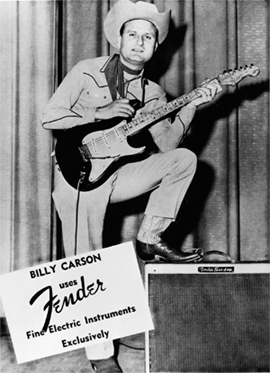Here’s an inside view of the early creation and production of the Fender Stratocaster, which turns 70 this year.
It’s an instrument we take for granted these days, but back in the mid ’50s Fender’s beautiful three-pickup solid, with its clever vibrato system and curvaceous body, was a remarkable arrival in the very new world of solidbody electric guitars. And these are the people who were right there at the beginning of it all.
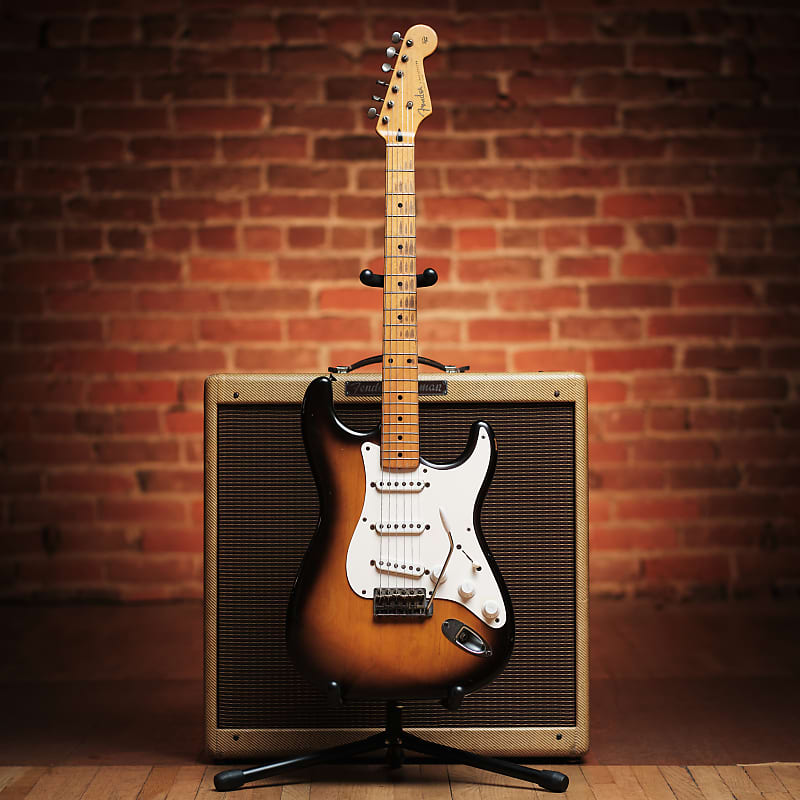
At the time I started with Leo Fender in May 1954, the production of the new Stratocaster was very low. They had the Telecaster, the Esquire, the Precision Bass. The Stratocaster had been designed, but there was no production yet—the first [full] production run was in October of '54.
Each musician who came into the factory had his own idea of how things should sound. Bill Carson said that with the three different bridge sections on the Esquire and Telecaster, there was no way he could get proper intonation—said there should be a separate bridge section for each string on the Stratocaster.
And now, the Stratocaster is the most copied guitar in the world—no other guitar is copied any more than Fender. Everyone tries to build a guitar that looks like Fender. Les Paul would probably run second.
Freddie Tavares came into the company about the time the Stratocaster was being started, and Bill Carson worked on the Stratocaster quite a bit. I think Freddie did some of the drawings on it and some of the final things. The Stratocaster was in the design idea before we moved from Pomona over to Raymond Avenue in Fullerton—the plans were already on the drawing board—and I think it was March ’53 [when] we moved there. That picture of me you see on the line was taken at the new building, when the first Strat came out in ’54.
Bill worked with Leo a great deal, specially on pickups, because he liked a certain kind of sound. He would come out when he had time, because he played music so wasn’t available very much. When he was here he was out working with Leo. Leo’d make something, and Bill would take it and try it on the job. So finally I guess Leo was able to make a pickup that suited Bill’s hearing.
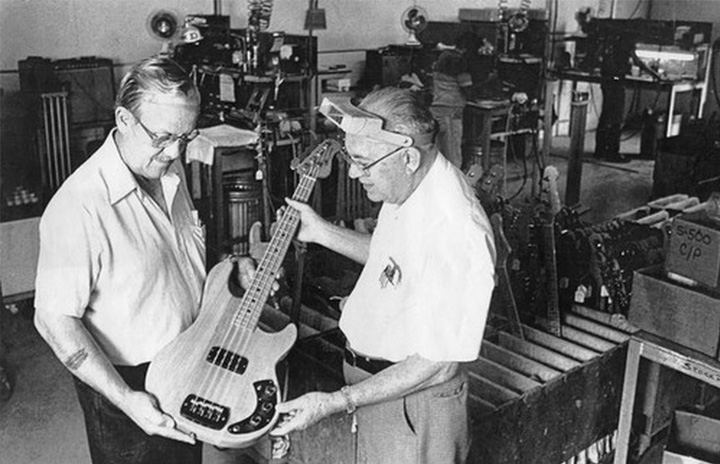
There were several things about the Stratocaster that Bill liked. Bill claims to be the one that came up with the cutaway, and yet on the other hand Leo gave [guitarist] Rex Gallion the credit for doing this. Rex was a big man and he complained that the Telecaster body used to cut into him a lot. Course, Bill had the same idea, but Leo says Rex was the man who came in first. I’d give Bill credit for the pickup and maybe the individual bridge sections.
The first vibrato unit on the Stratocaster was all designed, and Bill worked with Leo and some other people—I think Freddie really worked with Leo on this vibrato. It was decided it would be built, and tooling was purchased, parts made. And when that first one came off the line, I grabbed it … and it was terrible. Sounded terrible, sounded tinny, wouldn’t sustain sound. I rushed down to the lab there and said to Leo—it was all set up for production—I said: "We’ve got to stop this."
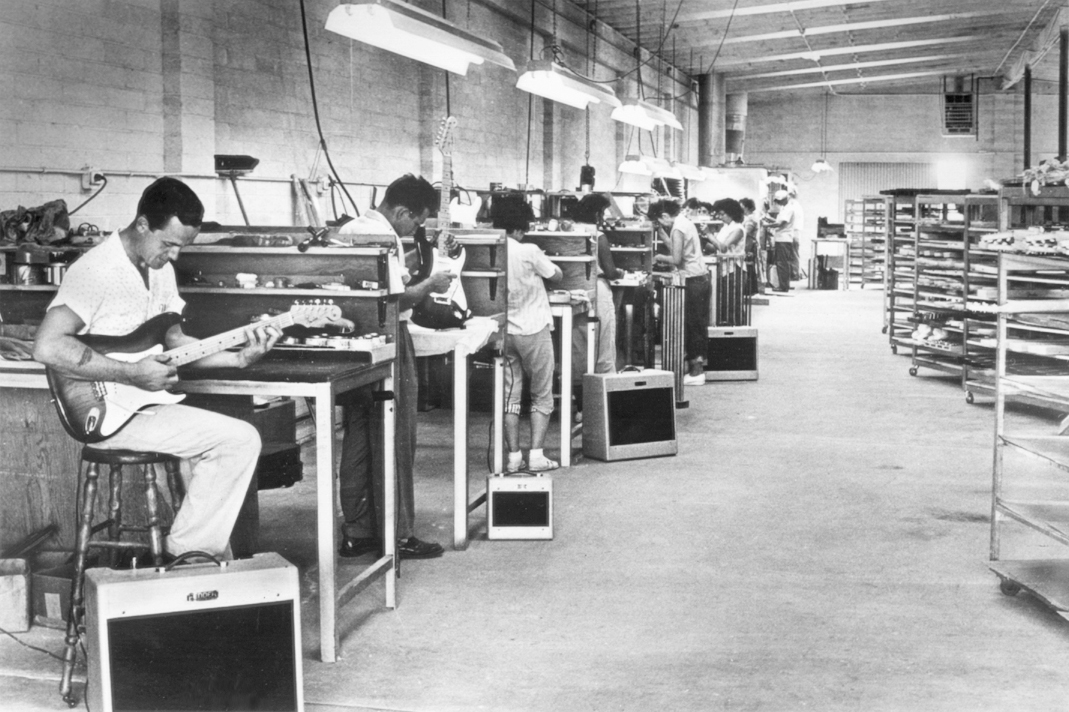
That whole thing was thrown out! All the parts, all the tooling, many thousands of dollars. The vibrato had to be redesigned, not only to sustain notes, but also to give a solid sound. And that’s why the Stratocaster didn’t come out as soon as it should have, even though it was already advertised. There was a lapse between that time until it actually came out, because they were re-tooling the vibrato.
All the guys want to say I designed this or I designed that, and one of the salesmen, Bill Carson, says he designed the Stratocaster. He really didn’t have a thing to do with it. Freddie Tavares was Leo’s helper in his shop. And the Stratocaster was brought about just as a necessary adjunct to the guitars we had, the Esquire and the Telecaster.
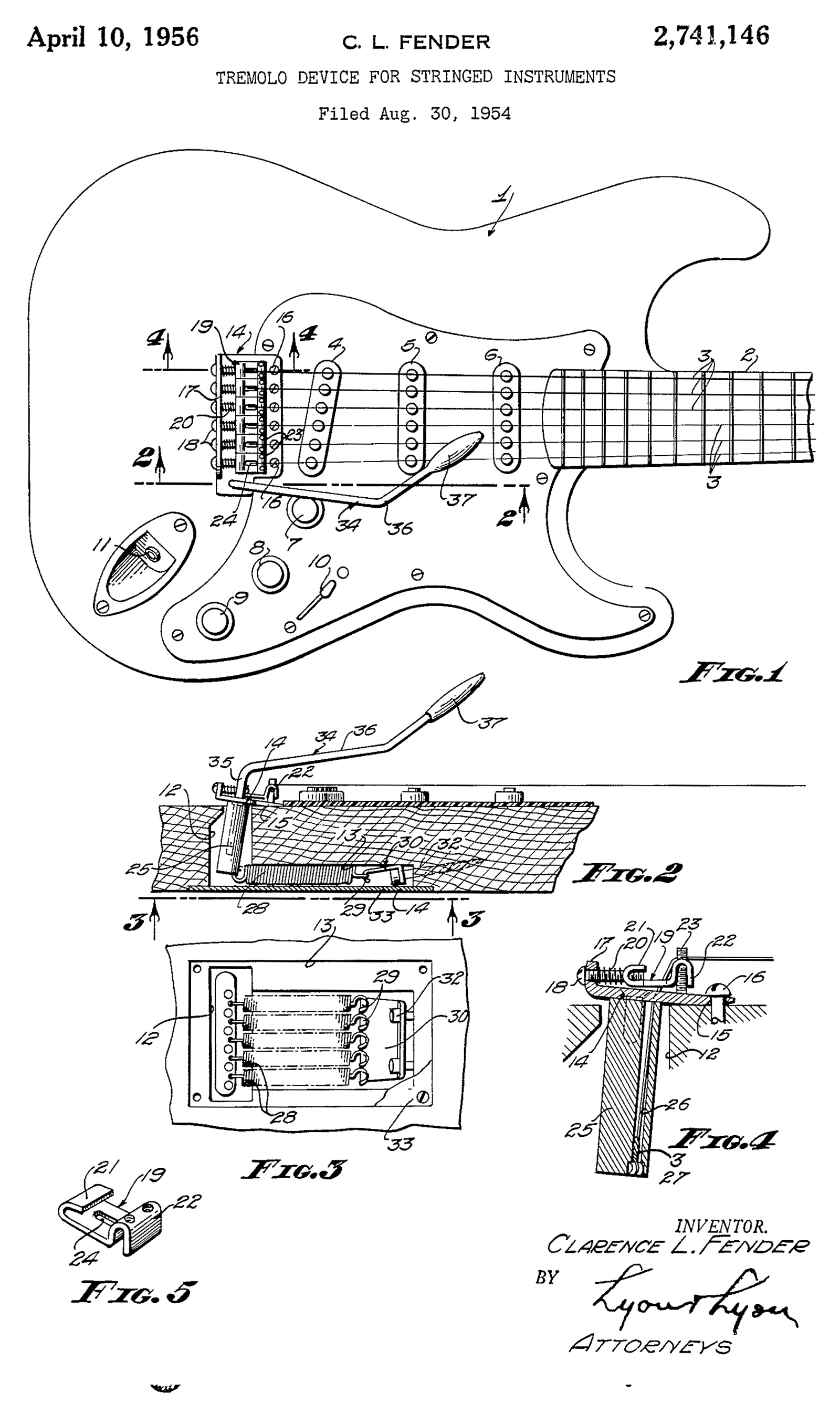
We needed a fancier guitar, an upgrade guitar. I named the guitars, and when the Stratocaster came along, they were talking about putting guys into orbit, so it was Telecaster, then Stratocaster into the stratosphere.
Leo found out people complained that the sharp edge on the Telecaster was uncomfortable, so he rolled off that part of the body. He said when you hold it against your body, that sharp edge is kind of cutting in there, too, so he cut it away right there. Far more comfortable.
You know, the Esquire and Telecaster are pretty ugly guitars when it comes right down to it. Let’s be frank about it, they were plain vanilla. In the days of Gibsons and things with bound necks and purfling, they were pretty ugly guitars. But we thought they were beautiful because we were making money with them.
So the Stratocaster was born, and the body was changed and the headstock was changed, a little more graceful, a little more lute-ish, by the way, a little more Paul Bigsby-ish, and a few natural changes came about. The tremolo was Leo’s pride and joy. That was his idea from way back when—he was working on a way of bending the strings. It was his design.
We made several of the tremolo bridges. The little saddle was a problem—we had a heck of a time getting something developed that was practical to make, to mass produce, that worked the way Leo wanted it to.
The tremolo has little adjustment screws in there to get the height that you need, and Leo wanted the string-length adjustment to be exact, because according to him if you couldn’t get it so many thousandths it was not the right sound. So something that looks simple wound up being quite a development.

The arm for the tremolo also took more development than you’d think. There weren’t many tremolos around, and they usually had stationary handles. But Leo wanted one that would do the job, said the guitarist might want to put it out of the way. He would say: "Boy, this angle has to be just right. That just don’t feel right." And, ha ha, I’d say: "Who’s gonna know the difference?"
With the jack, Leo didn’t want something to stick in the side, he wanted something developed that would be a shape that would let the plug come out at an angle, something that could practically be drawn without breaking.
I wanted a guitar with six bridges that would adjust vertically and horizontally, four pickups, body contours, a Bigsby-style headstock, and a vibrato that would not only come back to exact string pitch after you’d sharped or flatted it, but also I wanted it to sharp or flat half a tone at least and hold the chord. And that was tough to do, according to Leo.
We modified the Bigsby headstock—too ornate and hard to make—so it wound up much like you’ve seen it for the last several years. The four pickups became overkill and took too much space, so we dropped that to three.
I came to work at the shop one morning and Leo and George Fullerton had roughed up four bodies with different contours and body reliefs. I picked out one that was closer to my idea, and then a few days later Leo had a very ugly but very playable guitar. It was at this point that Freddie Tavares came to work part-time for Leo. Freddie was one of the best musicians I have ever known, and just as good at engineering. A very talented man.
George Fullerton said so many Telecaster jacks were wrecked by guys stepping on the cord, so why don’t we put a front-mounted jack on it, so that if you step on the cord it won’t wreck that input jack? So that jack was George’s idea, and a good one.
Pickup design was a matter of trial and error with magnet and wire size and amount of turns, and since Freddie was a good player and we both needed the same thing, it didn’t take us long to decide what was needed for pickup sound.
When guys like Jimi Hendrix came along, playing all that wild stuff, then we couldn’t build enough Stratocasters. As a matter of fact, I think Jimi Hendrix caused more Stratocasters to be sold than all the Fender salesmen put together. And as a matter of fact, ha ha, he was not one of my favorite musicians. I never could get with it. To me it sounded like a bunch of junk. I have to hear a melody, to be pleasing. I’m still the same today.
About the Author: Tony Bacon writes about musical instruments, musicians, and music. His books include The Stratocaster Guitar Book and Electric Guitars: Design & Invention. Tony lives in Bristol, England. More info at tonybacon.co.uk.

